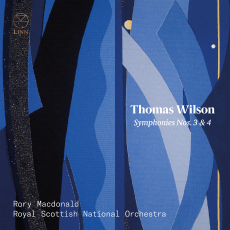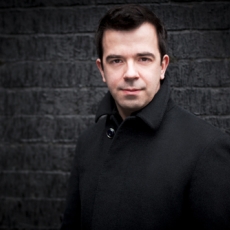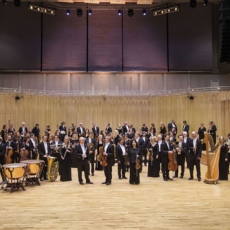Rory Macdonald & RSNO - Thomas Wilson: Symphonies Nos. 3 & 4 - MusicWeb International
Although Thomas Wilson was an important figure on the Scottish music scene and a prolific composer who enjoyed many commissions and performances, his music has still to make its way into the recording field. Up to now, two discs have been entirely devoted to his music – Chandos CHAN 8626 (Piano Concerto and Introit) and Delphian DCD34079. A recording of his Violin Concerto was available on a semi-commercial disc released by the National Youth Orchestra of Scotland (NYOS 001. Mention may also be made of a long-deleted cassette with a substantial selection of his output for piano (Aspen Music PEN 103).
Thomas Wilson composed five symphonies but the First was withdrawn after its first performance so the four that remain really represent the core of his symphonic output. The disc under review opens with Symphony No.4 “Passeleth Tapestry” of 1988, which was written on a commission from the Renfrew District Council and the Strathclyde Regional Council to mark Paisley's 500th anniversary as a Burgh of Barony. (“Passeleth” is the twelfth-century form of the town's name.) The composer remarked that “the plan of the Symphony No.4 is based upon the broad pattern of Paisley's history from its earliest days to the present time. It is not a programmatic work in the usual sense … but rather concerns itself with whole passage of history and ideas, trends and characteristics which underline them”. The work is laid out in one large single-movement structure falling into several continuous and often interlinked sections. It opens with a powerful carillon based on four notes (A – E flat – E – B flat), derived from the name Paisley, the Abbey and the Stewarts but these four notes also provide most of the later thematic material. The following sections each reflect some aspects of the life of the Abbey. So, the second section is based on the protestant psalm tune Martyrs. The third section is rather concerned with modern-age Paisley with some energetic and powerfully driven music eventually relaxing into calm stillness. In the closing section “a resolution of the principal material's conflicts” is represented by harmonious partnership between elements of the Reformers' tune Martyrs and the Abbey's ancient melody Victimae paschali laudes. A restatement of the opening carillon launches the final section and the work concludes on an assertive note. Even if the underlying programme may make the music somewhat easier to grasp and follow, the brilliant and strongly imaginative scoring is what keeps one's attention riveted from first to last.
By comparison, the Symphony No.3, again in five unbroken sections, may seem somewhat more reticent although it, too, is superbly scored for large orchestral forces. “My Symphony No.3 takes as its starting point the fundamental life pattern – genesis; metamorphosis; apogee; degeneration; and catastrophe; and in the case of this work, the early process of regeneration as a new life cycle begins” (the composer as quoted on the back cover). This clearly outlines the way the music unfolds independently from any fixed programme but nevertheless with some clearly planned long-term aim, the whole traversed in a strongly argued symphonic structure more attuned to the admittedly more universal concern of life and rebirth.
This generous release concludes with yet another brilliantly scored Carillon, a commission for the Royal Scottish National Orchestra and their then Principal Conductor Bryden Thomson in celebration of Glasgow as the European City of Culture. The piece opens with an imposing fanfare based on four notes contained in the word 'Glasgow', i.e. G – A – S (E flat) – G. Again, as in the Fourth Symphony, these four notes form a musical motif that pervades the whole piece. The music also reflects the various aspects of Glasgow in history as well as its geographical environment. The final section gains momentum and the music becomes increasingly lively and self-assured.
Rory Macdonald conducts strongly committed performances of these superb, often exacting but always beautiful scores and the RSNO respond with empathy and great verve. Everyone concerned obviously believes in every note of these scores, while the whole is superbly recorded. I must also mention Paul Conway's always well-informed and illuminating notes from which I have generously quoted.
In short, this is a magnificent release that will (I hope) serve Thomas Wilson's cause well and will prompt the same forces to go on recording the Second and Fifth Symphonies before too long.


